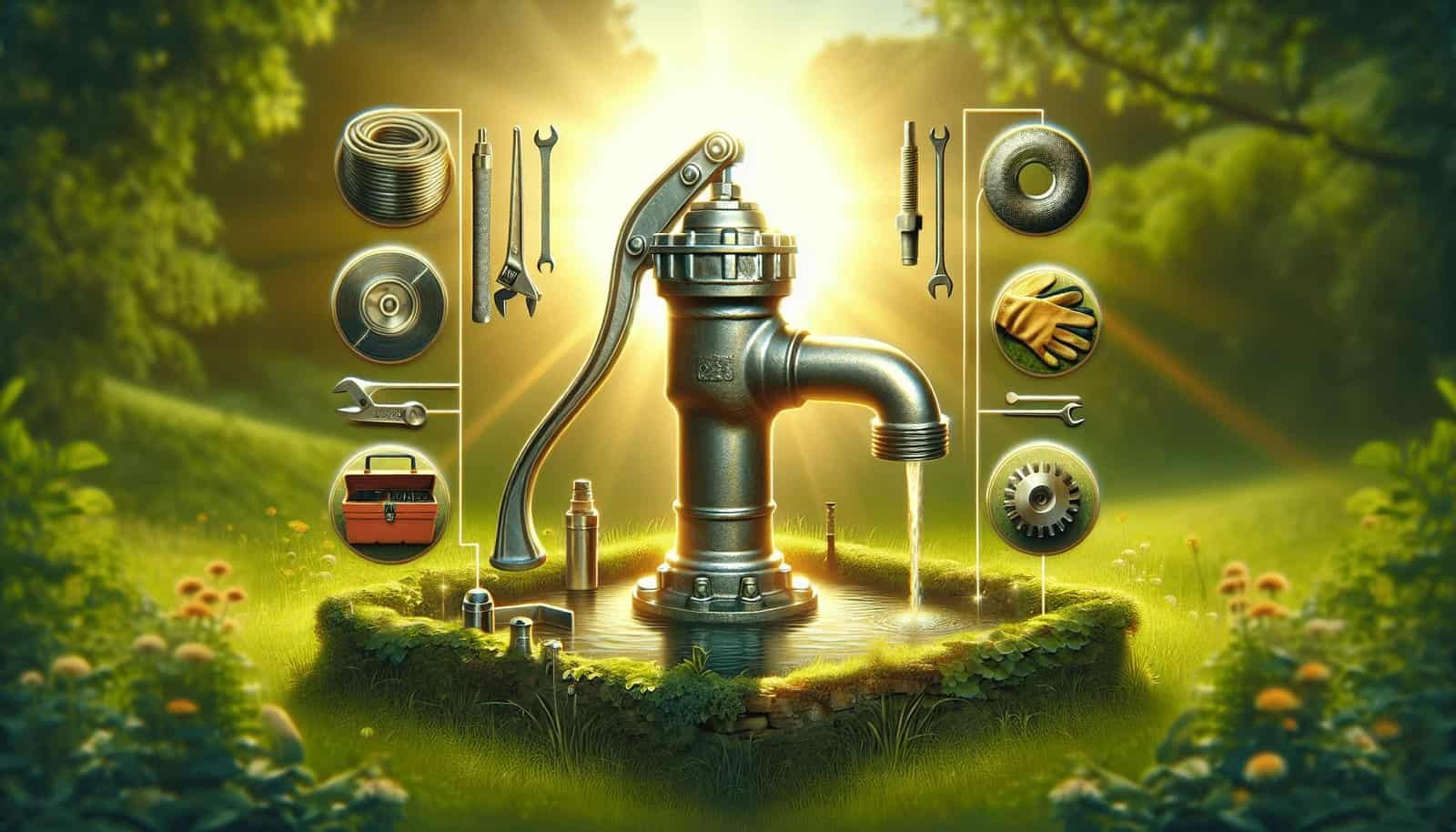How often do you think about the source of your water? If you rely on a well, taking good care of your well pump is essential for ensuring consistent water flow and avoiding unexpected disruptions. Maintaining a well pump might seem daunting at first, but by understanding its core components and putting some regular maintenance habits into practice, you can extend its life and keep your water supply running smoothly.
Understanding Your Well Pump
Before diving into the specifics of maintenance, it’s crucial to understand the basic workings of a well pump. Typically, well water systems use two kinds of pumps: submersible pumps and jet pumps. Knowing which type you have will help in tailoring maintenance approaches suitable for your setup.
Submersible Pumps
Submersible pumps are sealed units placed deep in the well, designed to push water upwards efficiently. Their underwater placement shields them from many external factors, reducing some maintenance needs, but these should not be neglected, as they can suffer from wear and tear over years of use.
Jet Pumps
Jet pumps are usually installed above ground and work by creating a vacuum to draw water. These pumps are more accessible but might require a bit more attention since they operate out in the open and are susceptible to environmental factors.
Setting Up a Maintenance Schedule
Consistency is key! Regular check-ups on your well pump can save you time and expenses in the long run. A good rule of thumb is to schedule a comprehensive inspection annually. Between inspections, adopt some basic monthly checks to ensure everything is in working order.
Annual Professional Inspections
Once a year, hiring a professional to examine your pump system thoroughly can prevent minor issues from becoming major headaches. During these check-ups, technicians typically:
- Inspect the pump and its components for any signs of wear or damage.
- Test the water pressure to ensure it’s at optimal levels.
- Check electrical connections and controls.
These inspections provide peace of mind and verify that all system aspects are functioning as they should.
Monthly Visual Inspections
While annual professional inspections are invaluable, monthly checks you can perform yourself are equally important. These should include:
- Observing the area around your pump for signs of rust or leaks.
- Listening for unusual sounds that might indicate wear or component issues.
- Ensuring that the pressure gauge maintains consistent readings.
By doing these visual inspections, you can quickly catch anomalies that could potentially develop into more severe problems.

Addressing Common Well Pump Problems
No matter how diligent you are with maintenance, problems can sometimes arise. Knowing how to identify common issues and their rudimentary fixes can keep your system operational until professional help is available.
Loss of Pressure
One of the primary indications of a problem with your well pump is a noticeable drop in water pressure. This could be due to:
- A malfunctioning pressure switch.
- Blocked water lines.
- Issues with the pressure tank.
Start by checking and adjusting the pressure switch if needed. Also, ensure that any visible filters are clear of debris that might be obstructing flow.
Air in the System
If you find air spurts when you turn on your taps, your system might have an air leak. This often occurs when:
- The pump casing has cracks.
- The check valve near the pump is not sealing correctly.
Sealing leaks can sometimes be accomplished with simple repairs, like tightening connections or replacing worn-out parts.
Pump Won’t Start
When your pump won’t start, it might be due to electrical issues or a damaged component. Check for:
- Blown fuses or tripped circuit breakers.
- Secure electrical connections.
- Any damage to the wiring.
Once you identify the root of the problem, you can make a quick fix or call for professional service.
Maintaining Optimal Water Quality
Ensuring good water quality is another critical component of maintaining a well pump. Contaminants can affect the system’s efficiency and lead to health hazards. Here’s how you can preserve the quality of your well water.
Water Testing
Regularly testing your well water for contaminants ensures it remains safe for consumption. Ideally, test water annually for parameters like pH, minerals, and presence of bacteria. Home testing kits are available, but professional lab analysis provides a more comprehensive report.
Filtration and Treatment
Based on your water tests, you might need to implement filtration or treatment solutions. Common methods include water softeners for hard water, reverse osmosis for removing specific contaminants, and UV systems for bacterial concerns.
Wellhead Protection
The wellhead is pivotal since it’s the entry point for water into the pump. Make sure it’s:
- Located at a distance from any sources of contamination (like septic systems).
- Elevated above ground level to prevent surface water ingress.
- Securely sealed and structurally sound to prevent contamination.

Environmental and Seasonal Considerations
Seasonal changes can present unique challenges for well pump maintenance. Adapting to environmental conditions helps prevent strain on your pump.
Cold Weather Considerations
During winter, freezing temperatures can damage your pump and water lines. To mitigate this:
- Insulate exposed water lines to combat freezing.
- Ensure pump housing is well insulated.
- Keep a slow trickle of water flowing in extreme temperatures to prevent ice formation.
Drought Conditions
Extended dry periods can affect your water table, impacting pump performance. Keep an eye on water levels and consider:
- Reducing water usage during droughts to conserve supply.
- Installing a low-water cut-off switch to prevent the pump from running dry.
- Having a backup plan with alternative water sources.
Extending the Life of Your Well Pump
To prolong your well pump’s lifespan, proactive measures can safeguard the investment you’ve made in your water system. Focus on consistency, anticipation of potential challenges, and prompt responses to issues encountered.
Invest in Quality Components
Quality matters. When replacing parts of your well pump, always select high-grade materials for durability and reliability. Cutting costs upfront by choosing cheaper components can lead to more frequent repairs and replacements.
Monitor Usage Trends
Keep an annual record of water usage and related maintenance activities. Recognizing patterns in your water usage can help detect early signs of wear and optimize maintenance schedules.
Educate and Involve Your Household
Encourage everyone in your household to participate in maintaining water systems. Simple actions like turning off taps quickly or reporting strange noises directly contribute to the health of your water system.

Seeking Professional Help
Your well pump is a crucial part of your home infrastructure, and while general maintenance can often be performed independently, some situations will require professional expertise.
When to Call a Professional
- If any part of the pump or its controls are beyond your technical understanding or ability to repair.
- When dealing with major electrical issues.
- For thorough system diagnostics and situations that require specialized tools or knowledge.
Finding Reliable Experts
Locate a trusted service provider in your area by:
- Seeking referrals from friends or neighbors with similar water systems.
- Reading reviews and testimonials online.
- Checking for proper certifications and insurance before hiring.
Conclusion
Caring for your well pump may seem complex, especially for those new to managing private water systems. However, with awareness, commitment, and occasional professional assistance, you can ensure that your pump functions efficiently for a long time. Remember: consistent attention to detail now can prevent substantial problems later. Through dedicated maintenance, your well will continue to serve as a trustworthy water source for years to come.
By keeping a close eye on your system, meeting challenges proactively, and adhering to a regular maintenance schedule, you maximize the longevity of your well pump and secure a dependable water supply for your household.

